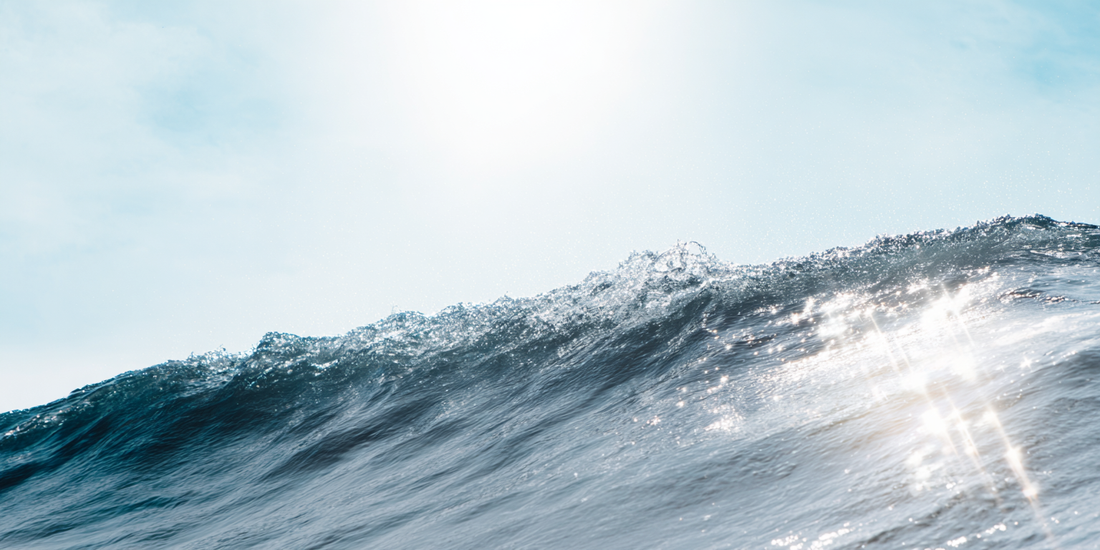
Riding the Waves: How Ocean-Friendly Skincare is Changing the Game
Share
There’s a new kind of skincare on the rise - one that doesn’t just look after your skin, but looks out for the planet too. It’s called ocean-friendly skincare, and for those of us who care as much about what goes down the plughole as what goes on our face, it’s a shift that makes a lot of sense.
If you’ve been hearing terms like blue beauty, plastic-free skincare, or eco skincare more often lately, you’re not alone. These aren’t just trendy labels - they’re part of a much-needed rethink about how our daily beauty habits impact the world around us.
So, what actually is ocean-friendly skincare?
At its core, it’s skincare that’s designed to be kind to the sea. That means avoiding plastic-based ingredients which stick around in oceans for years, no microplastics, and no wasteful plastic packaging that ends up in landfills or, worse, floating in the tide.
Conventional skincare, even the expensive kind, often contains hidden plastic-based ingredients - things like PEGs, silicones and Polypropylene - that don’t break down easily. They wash off our faces and end up in rivers and oceans, where they can harm marine life in ways we’re only just beginning to understand.
Ocean-friendly products take a different approach. They’re made with biodegradable, plant-based ingredients and packaged in materials that either get reused, recycled or composted. It’s about doing better, without sacrificing what works.
Hidden plastics: what to look out for
It’s surprisingly easy to miss the plastics hiding in your products. Here are a few common ones:
-
Polyethylene / Polypropylene – often used as microbeads or thickeners
-
PEGs (polyethylene glycols) – synthetic ingredients that can carry unwanted contaminants
-
Silicones like dimethicone – make products feel silky, but don’t break down in water
-
Acrylates – used for long-wear or waterproofing; tough on marine life
-
Polyquaterniums – give that “conditioned” feeling, but linger in ecosystems
Once you know what to look for, it’s much easier to choose products that align with your values. And honestly, your skin doesn’t need these ingredients to feel good—it just needs the right kind of care.
Why switching feels so good
One of the nicest things about choosing ocean-friendly skincare is how… easy it feels. You’re doing something good, and it doesn’t have to be a big dramatic change. Start with one product - maybe a sustainable moisturiser - and build from there.
These swaps often come with extra perks too: fewer irritants, more transparent ingredients lists, and brands that actually talk about what they’re doing and why. Plus, there’s something oddly satisfying about seeing a row of glass jars or refillable bottles on your shelf instead of single-use plastic tubes.
How to spot the good stuff
If you’re browsing with ocean-friendliness in mind, keep an eye out for:
-
Ingredients you recognise (like aloe, shea butter, or olive-derived squalane)
-
Packaging made from glass, aluminium, or compostable materials
-
Refillable options - some even offer return-and-reuse schemes
-
Certifications like Leaping Bunny, FSC or reef-safe labels
-
Brands that are open about sourcing and sustainability
This isn’t about perfection, it’s about doing what you can, when you can. Even a small change is a step in the right direction.
The bigger picture
Ocean skincare isn’t just a feel-good switch, it’s part of something bigger. As consumers, we have more influence than we realise. The more we choose eco skincare and support brands that prioritise the planet, the more the industry takes notice.
So if you’re ready to ride the wave and make your routine a little kinder to the oceans, now’s the perfect time. It’s skincare that looks good, feels good, and does good too.




